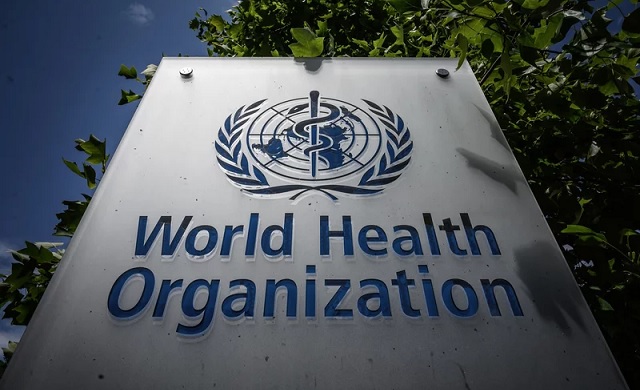
Investing in a well-trained workforce and innovations in digital solutions could limit the exodus of clinicians
COMMENT | CLAUDIA SHILUMANI | This year the World Health Organisation added 37 African countries to a list of nations at risk of facing worsening health worker shortages due to “brain drain” – a well-documented phenomenon of health workers emigrating to work in high-income countries like the U.S., Canada and Europe.
This exodus of clinicians from African nations is impeding access to quality healthcare, leading to patients facing long queues and lack of specialised medical services. They may even get turned away as health centers struggle to manage demand with limited staff.
Brain drain isn’t a new issue. But it’s contributed to a reality where the vast majority of countries across the continent have fewer than two health workers for every 1,000 people, a far cry from countries like Sweden , which has 4,3 doctors and 10,9 nurses for every 1,000 people. Rapidly changing demographics and population growth, rising inflation, and weak health workforce governance all exacerbate the issue. By 2030, it’s projected that Africa will have a shortage of 6 million health workers.
Many strategies to address the health-worker shortage have focused on preventing overseas recruitment of nurses and doctors. But systemic issues like poor working conditions and limited professional training opportunities are driving the shortage, compounded by difficulties in deploying health workers to rural, remote and under-reached communities. Countries therefore must invest in the people and systems needed to address unmet health needs.
First, countries must ensure that health providers always have the medical supplies they need, when they need them. When health products are out of stock, it adds undue stress on overstretched doctors and nurses already struggling to keep up with patient demand. Public health supply chains must ensure that products are consistently delivered where they need to go, which requires they be people-centered, equitable, responsive, and resilient.
This can only be made possible with a well-trained technical workforce, yet public health supply chain management has yet to be formalised and recognised as a discipline in most countries. Academic and government programs that train these professionals provide continuing professional development opportunities, and offer formal supply chain management certification which could create jobs, strengthen health systems, and fortify the future of healthcare delivery. Governments and universities in countries like Ethiopia, Tanzania and Rwanda are actively taking steps toward professionalising public health supply chain management, and others should follow in their footsteps.
Second, countries must professionalise the broad base of community health workers (CHWs) to fully unlock their potential to increase access to health services, especially at the last mile. CHWs are often the primary link between under-reached communities and the healthcare system, performing simple but crucial healthcare activities that help prevent and address common health issues, and easing the demand on health centers. Task shifting has long proven to ease the burden on the scarce doctors and nurses on the continent.
But many countries fail to include CHWs in health sector planning, leaving them without adequate resources, support or training to provide care. “Professionalising” CHWs makes them salaried, skilled, supervised, and supplied so they are fully integrated into primary healthcare systems. For example, in Liberia, policymakers are working with VillageReach and other partners like Last Mile Health to add CHWs to the national health budget line, ensuring they are allocated the supplies they need to provide care in the farthest villages.
Finally, digital solutions can play a crucial role in alleviating the burden of patient caseloads for health workers. Telehealth continues to be one of Africa’s fastest-growing healthcare delivery solutions, and is among the most cost-efficient strategies. For example, in Malawi, the Health Center by Phone solution co-developed by VillageReach and the Ministry of Health, acts as a first point of care that a patient can access via call or text to receive accurate health information from well-trained health workers, and self-assess their symptoms before journeying to a health center. The hotline provides referrals as needed, but also helps prevent people who have concerns that can be resolved over the phone from visiting hospitals unnecessarily, reducing exposures to hospital-acquired infections.
In addition to serving patients, Health Center by Phone also provides remote training for health workers and supports governments by enhancing data visibility, offering feedback on health services, and helping to identifying outbreaks. Many countries already have a health hotline in place and can look towards Malawi’s example to fully unlock its potential.
These solutions are just one piece of the puzzle in addressing the shortage and strengthening the entire health care system. However, retaining and supporting the full cadre of health workers will also require better pay, professional development opportunities, and increased mental health support. Countries must also continue to invest in growing the total number of health workers across the continent.
Collaborative work toward these goals has already begun under continent-wide initiatives like the Africa CDC’s plan for a New Public Health Order . The upcoming 3rd International Conference on Public Health in Africa ( CPHIA 2023 ), co-hosted by the Africa CDC, the Zambia National Public Health Institute, and the Zambian Ministry of Health, will serve as a forum for countries, organisations, and international partners to align on further strategies to address the shortage of healthcare workers.
This meeting will also be an opportunity to intensify political and financial commitment towards a genuine transformation of healthcare systems. Only then can Africa bridge the gap in its health workforce and realise a future where safe, high-quality healthcare is accessible to all.
*****

Claudia Shilumani is VP Partnerships and Impact, VillageReach. Other contributors to this article are: Rebecca Alban, Senior Manager, Global Technical Team, VillageReach and Edwin Mulwa, Director & Team Lead, Digital Solutions, VillageReach.
 The Independent Uganda: You get the Truth we Pay the Price
The Independent Uganda: You get the Truth we Pay the Price


